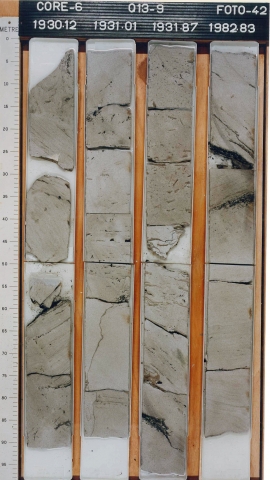Code
SLDND
Status
Formal (Van Adrichem Boogaert & Kouwe 1993).
Lithological description
Light-grey massive sandstone sequence, fine to coarse-gravelly, fining upward, lignitic.
Depositional setting
Distributary-channels in a lower-coastal-plain setting.
Definition of lower boundary
Conformably overlie the flood-plain deposits of the Alblasserdam Member. In the type section the unit unconformably overlies the Aalburg Formation.
Definition of upper boundary
Conformably overlain by the organic rich claystones of the Rodenrijs Member.
Thickness indication
Generally less than 145 m, but up to 320 m in Q13-04.
Geographical distribution
Regional correlation
UK: Cromer Knoll Group - Humber Group; GER: ?; BEL: -.
Age
Valanginian.
Holostratotype
Well:
Depth (thickness) AH:
2224 - 2256 m (32 m)
Parastratotype
Well:
Depth (thickness) AH:
674 - 741 m (67 m)
Origin of name
Named after the city of Delft.
Previous name(s)
None.
Reviewed by (date)
Sander Houben (2017).
References
Van Adrichem Boogaert, H.A. & Kouwe, W.F.P. 1993. Stratigraphic nomenclature of The Netherlands; revision and update by RGD and NOGEPA, Section G, Upper Jurassic and Lower Cretaceous. Mededelingen Rijks Geologische Dienst, 50, 1-80..
Cite as
TNO-GDN ([YEAR]). Delft Sandstone Member. In: Stratigraphic Nomenclature of the Netherlands, TNO – Geological Survey of the Netherlands. Accessed on [DATE] from https://www.dinoloket.nl/en/stratigraphic-nomenclature/delft-sandstone-member.
